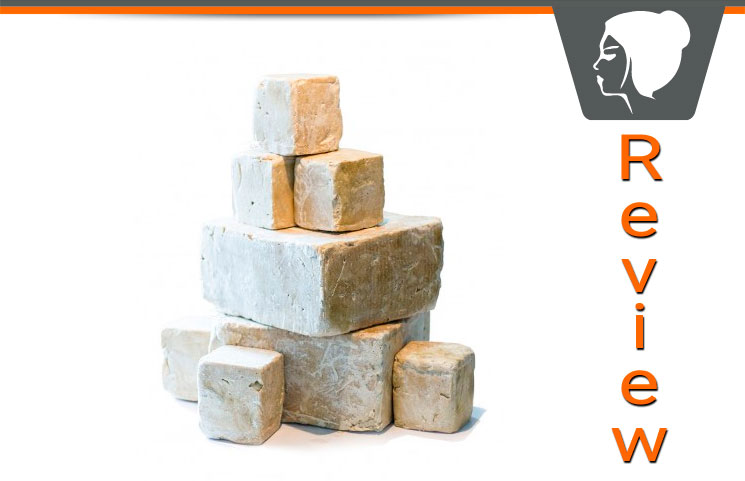Kokum Butter Review
Kokum Butter is a type of butter made from kokum oil. Here’s our kokum butter review.
What is Kokum Butter?
Kokum butter is a unique natural product sourced out of India. The butter is renowned for its moisturizing and regenerative properties, making it a popular ingredient in moisturizers, lip balms, and skin creams.
Despite the name, kokum butter isn’t used as a food product at all: it’s used exclusively as a cosmetic ingredient.
The butter itself comes from the Garcinia indica tree – no, that tree has no relation to the tree that produces the infamous Garcinia cambogia diet pill ingredient.
Today, many natural beauty product manufacturers replace ingredients like cocoa butter with kokum butter to enhance the healing properties of the cream. Some manufacturers also use kokum butter in complementary fashion. Burt’s Bees, for example, sells a lip balm that combines kokum butter with cocoa and shea butters.
The butter is harder than your average butter. It’s also dry and flaky. You can order bulk kokum butter in its raw state – or you can order beauty products with kokum butter in their ingredients list.
Where is Kokum Butter Used?
Kokum butter’s benefits are most noticeable in the following beauty products:
— Soaps
— Body Creams
— Body Butters
— Skin Healing Lotions
— Other Cosmetics and Toiletries
The most popular uses for kokum butter are to treat dry lips, moisturize chapped hands, and repair skin on the soles of the feet.
Where Does Kokum Butter Come From?
Kokum butter comes from the seeds of the kokum tree. The scientific name of the kokum tree is Garcinia indica. Depending on your region, some people also call this tree a “wild mangosteen tree”, “red mangosteen tree”, or “Goa butter tree.”
Researchers aren’t entirely sure where the tree originated. There’s equally strong evidence for two locations: some people believe the tree originally comes from Africa, while others believe that the tree comes from the Western Ghats of India.
Today, we know that most kokum trees are found in and around southern India. It’s an evergreen tree that favors the coastal climates of the Konkan, Goa, Karnataka, and North Malabar. The tree can also be found in Jaintia Hills, West Bengal, Assam, and the Nicobar Islands.
The kokum tree is particularly common at higher altitudes. In the Western Ghats mountain range, the tree is typically found at elevations above 800 meters.
To make kokum butter from the kokum tree, manufacturers gather the fruits, extract the seeds, and then extract the oil from the seeds.
The oil that comes from the seeds is edible and is often used in local dishes throughout Southern India.
Properties of Kokum Butter
Kokum butter naturally consists of the following ingredients:
— 55 to 65% stearic acid
— 30 to 44% oleic acid
— 2 to 8% palmitic acid
— 0 to 8% linoleic acid
Other key properties of the butter include its high levels of antioxidants and vitamin E – both of which are proven ways to heal and repair the skin.
The butter has a light pinkish white color and an odd, fatty taste (the odd flavor is a big reason why people don’t eat it).
Why Does Kokum Butter Work?
Kokum butter works because its high fatty acid content repairs and soothes skin in a way that few other natural compounds can. The butter is well-known for its emollient and regenerative properties.
Kokum butter’s high fatty acid content also improves its emulsion stability and offers thickness without the stiffness associated with lesser-quality skin care products. Ultimately, this means you can apply kokum butter to your skin quite easily – as you’ll learn in the next section.
How to Apply Kokum Butter
Kokum butter is non-greasy, which means that it typically gets absorbed into the skin fairly quickly after application. You may be surprised to discover that the butter will actually “melt” upon application on the skin – which is why you need to be careful not to apply too much of it. The butter has a melting point of approximately 34 to 40 degrees Celsius.
By applying just the right amount of kokum butter, you’ll find that it melts slightly upon contact, letting your skin absorb it more easily while avoiding any excess waste.
How to Buy Kokum Butter
Some people buy raw kokum butter, while others buy kokum butter-based skin creams and products.
If you’re making your own kokum butter at home, try adding it to your favorite cosmetic oil blend at a 10% ratio. The butter works in a similar way to coconut butter, thickening your homemade cosmetic oil blend and providing high levels of regenerative fatty acid content.
In terms of pricing, one retail outlet sold kokum butter at the following prices here:
— 1 Ounce: $3.03
— 8 Ounces: $10.61
— 1 Pound: $19.20
— 5 Pounds: $86.41
— 10 Pounds: $138.24
Burt’s Bees – a company famous for its lip balms – actually sells a kokum butter-based balm. That balm is priced at around $4 for a single stick. Specific benefits of that balm include the fact that it’s “clinically proven to offer 4 hours of long-lasting moisturization”. The balm uses a mixture of kokum butter with cocoa and shea butters that “melt on lips” for maximum absorption.









